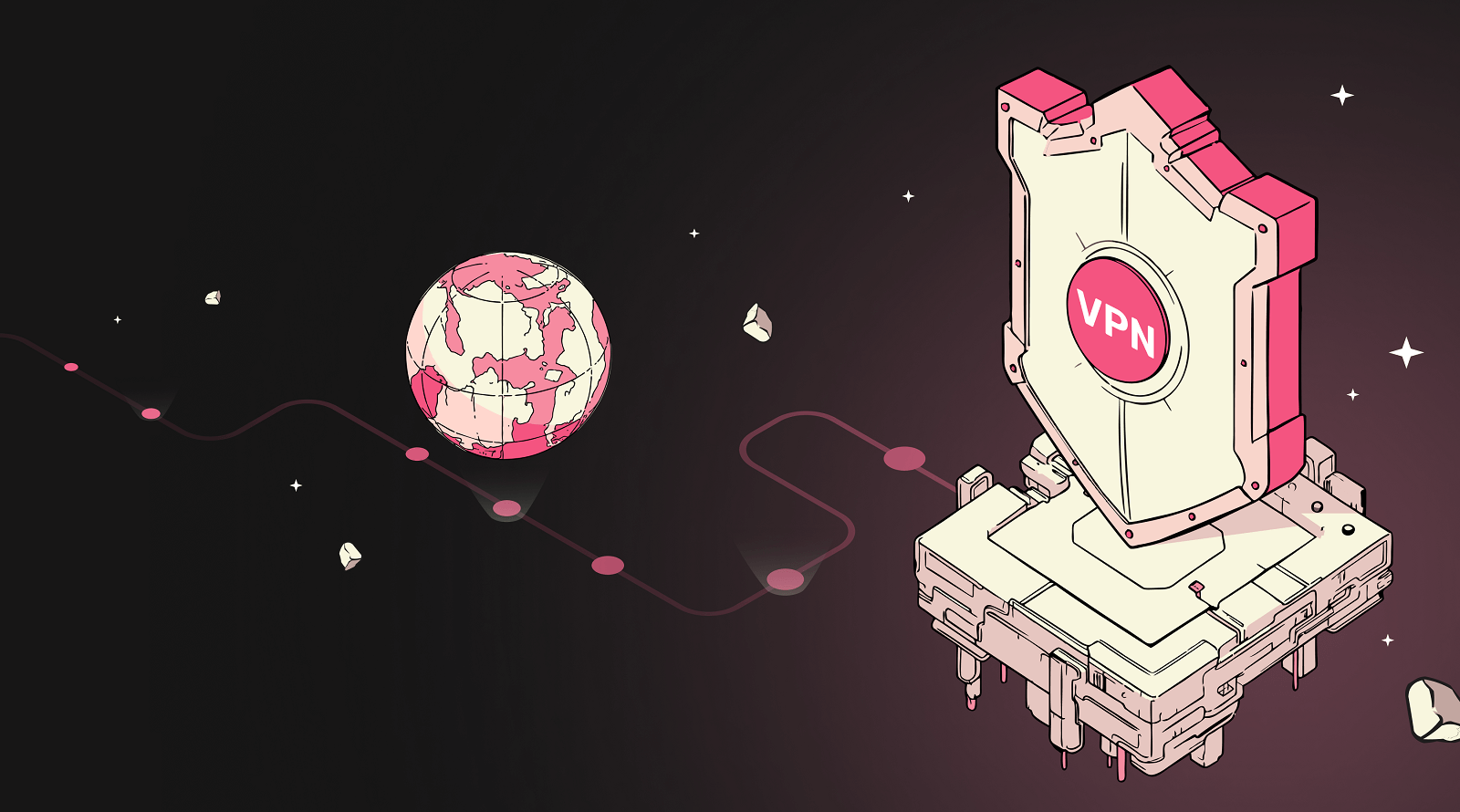VPN History: From Military Tech to Online Privacy

Introduction
Today, VPNs are more than just tools for bypassing censorship. They are digital armor, protecting our data from hackers, corporations, and even government surveillance. But it wasn’t always this way.
Why should we know the history of VPNs? Because behind every modern service like KelVPN lie decades of trial, error, and technological breakthroughs — from secret military developments to an everyday tool used by millions.
1. The Birth of Anonymity: Before the 1990s
1.1. VPN Precursors
1969: ARPANET
The world’s first computer network, the predecessor of the internet. Even then, it was clear: open data transmission was like sending a postcard — anyone could read it.
1970s–1980s: X.25 and Frame Relay
Early attempts to create secure “tunnels” for data. They were slow and expensive, but they marked the first steps toward privacy.
1991: PGP (Pretty Good Privacy)
Phil Zimmermann developed the first accessible encryption tool. It was a breakthrough: now even ordinary users could protect their emails from prying eyes.
1.2. Military and Corporate Needs
TCP/IP (1970s)
The foundational protocol of the internet. Convenient, but vulnerable — data was transmitted in plaintext.
NSA and U.S. DoD Secret Projects
While regular users hadn’t yet considered privacy, intelligence agencies were already experimenting with traffic encryption. For example:
- Secure channels for transmitting classified intelligence.
- Early VPN-like systems for closed government networks.
VPNs didn’t appear out of nowhere. They’re the result of an evolution — from military-grade systems to a mass-market tool for digital freedom.
2. The Rise of VPNs: The 1990s
2.1. Early Protocols
The 1990s were a turning point: the internet left the lab and entered the public domain — and so did the need for secure connections.
swIPe (1993): The First Step Toward Anonymity
Developed in research circles, swIPe (Secure IP Encryption Protocol) encrypted IP packets, rendering them unreadable to outsiders. It was a precursor to VPNs but too complex for mass adoption.
IPsec (1994): The Foundation of Modern VPNs
The IETF working group introduced IPsec (Internet Protocol Security), a protocol that became the backbone of corporate and government VPNs. Its key features:
- Authentication – verified the sender’s identity.
- Encryption – turned data into digital ciphertext.
- Flexibility – worked across various network layers.
IPsec is still used in banking systems and secure government networks.
PPTP (1996): VPN for the Masses (With Flaws)
Microsoft made VPNs accessible by integrating PPTP (Point-to-Point Tunneling Protocol) into Windows 95. This was a breakthrough: now anyone could create an encrypted tunnel. But by 1998, hackers had found vulnerabilities — PPTP could be cracked within hours.
2.2. Corporate Adoption
While everyday users explored the internet, businesses quickly saw the value of VPNs.
Remote Work Without Risk
Companies began connecting employees through VPNs to:
- Access corporate email from home.
- Work with internal databases without risk of data leaks.
Intranet VPNs: Unified Office Networks
Large corporations linked branches via VPNs, creating private “intranets.” For example:
- Banks transmitted financial data between cities.
- Multinational firms connected HQs with factories abroad.
End of the Decade
By the late 1990s, VPNs were no longer experimental — they had become a business essential. The next step: reaching the everyday user.
3. The 2000s: VPN Goes Public
3.1. Fighting Censorship
In the 2000s, VPNs transformed from corporate tools to weapons of digital freedom — a response to increasing state censorship.
China and the “Golden Shield” (2003)
The Great Firewall began blocking “undesirable” sites — Google, Facebook, YouTube. Users found a loophole: VPNs.
- Business tunnels became tools for circumvention.
- Authorities cracked down on VPN providers, but couldn’t eliminate them.
Iran, Russia – Protests and Anonymity
After Iran’s 2009 protest crackdown, VPNs became the only way to access the open internet.
In Russia, as internet laws tightened, people flocked to VPNs to evade censorship.
VPNs were no longer just tech — they became a symbol of digital resistance.
3.2. A Technological Leap Forward
OpenVPN (2001): Open-Source and Reliable
- Flexibility: ran on any platform.
- Security: open-source code meant vulnerabilities were found and fixed quickly.
- Accessibility: free servers emerged worldwide.
L2TP/IPsec (Cisco): The Corporate Standard
A combination of L2TP (tunneling) and IPsec (encryption).
More secure than PPTP, but harder to configure.
SSTP (2008, Microsoft): VPN via HTTPS
Disguised as normal browser traffic.
Good at bypassing firewalls, but locked to Windows.
End of the Decade
By 2010, VPNs were mainstream:
- Consumers: accessed blocked content.
- Activists: protected against surveillance.
- Corporations: ensured secure communication.
4. The 2010s: The Privacy Era
4.1. Scandals and Regulation
The Snowden Case (2013): A Surge in VPN Demand
On June 5, 2013, the world learned the internet had never been private. Edward Snowden exposed NSA documents proving mass surveillance:
- PRISM – collected data from Google, Facebook, Microsoft.
- XKeyscore – analyzed real-time traffic.
- Global spying – even U.S. allies were monitored.
The reaction was immediate:
Mass adoption of VPNs by privacy-conscious users.
VPN Crackdowns in Russia and Beyond
Governments pushed back:
- 2017, Russia – Roskomnadzor launched an anti-VPN campaign: IP blocks, legal pressure on providers.
- 2018, China – banned all commercial VPNs without a license.
- Turkey, Iran, UAE – VPNs entered a legal gray zone: sometimes banned, sometimes tolerated.
But the tech proved resilient:
- Obfuscation – disguised VPN traffic as regular HTTPS.
- Ghost servers – invisible to Deep Packet Inspection (DPI).
- P2P VPNs – no central servers, nothing to block.
4.2. New Technologies
WireGuard (2015): Simplicity and Speed
Old protocols like OpenVPN and IPsec were powerful but:
- Bulky – thousands of lines of code meant many potential bugs.
- Slow – double encryption reduced speed.
Jason Donenfeld’s solution:
- Just 4,000 lines of code (vs. 100,000 in OpenVPN).
- ChaCha20 crypto for blazing-fast performance.
- Built into Linux 5.6 — became the de facto standard.
Multi-hop VPNs: Maximum Anonymity
Regular VPNs have a weak point: if the provider logs traffic, users can be identified. Solution — chained servers:
- Data passes through 2–3 nodes (e.g., Germany → Iceland → Canada).
- No single server knows the full route.
- Even if one node is compromised, the user stays anonymous.
Used by:
- Journalists – working with leaked materials.
- Crypto investors – hiding IPs during large transactions.
- Anonymous bloggers – in authoritarian regimes.
End of the Decade
By 2025, VPNs were no longer just tools — they had become a symbol of digital freedom.
5. The Present and Future
5.1. 2020s Trends
Decentralization as the New Standard
As even major VPN providers bend to government pressure, fundamentally new models are emerging. KelVPN leads the way with a revolutionary approach:
- Blockchain-powered – a network of independent nodes where anyone can become a VPN provider.
- Quantum-resistant cryptography – protects data to future-proof standards, years ahead of industry norms.
Integration into the Digital Ecosystem
KelVPN isn’t just an app — it’s part of the broader quantum-resistant Cellframe Network, offering:
- Cross-platform support (macOS, Android, Linux, Windows).
- Direct integration with Cellframe's blockchain and the KEL token economy.
- Monetization opportunities for VPN node operators, who also act as blockchain validators.
5.2. Technological Breakthroughs
Quantum Security – Available Today
While the industry is still preparing to adopt new standards, KelVPN is already implementing:
- CRYSTALS-Dilithium – a post-quantum digital signature algorithm
- Kyber 512 – a quantum-resistant key exchange protocol
These NIST-approved solutions provide protection against future threats, including attacks using quantum computers.
Decentralized Architecture
Key features of the network include:
- Dual-role nodes:
- Validate blockchain transactions
- Provide VPN services
- P2P model eliminates single points of failure
- Operational transparency while preserving user anonymity
5.3. The Future of Privacy
KelVPN represents the next evolutionary step in VPN technology:
- From centralization to distributed networks – no single operator that could be compelled to hand over data
- From traditional encryption to quantum-resistant security – protection for decades ahead
- From payments via intermediaries to direct settlement – users interact with providers through a native blockchain network and pay with cryptocurrency
Conclusion
VPN technology has evolved from military applications to mass-market services — and is now entering the era of decentralization.
KelVPN is not just a tool for bypassing censorship, but a fundamentally new model of data protection, where:
- Security against both current and future threats is available today through quantum-resistant encryption
- The technology is years ahead of current industry standards

